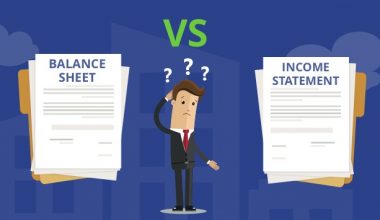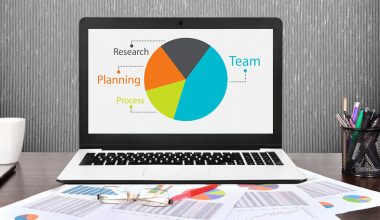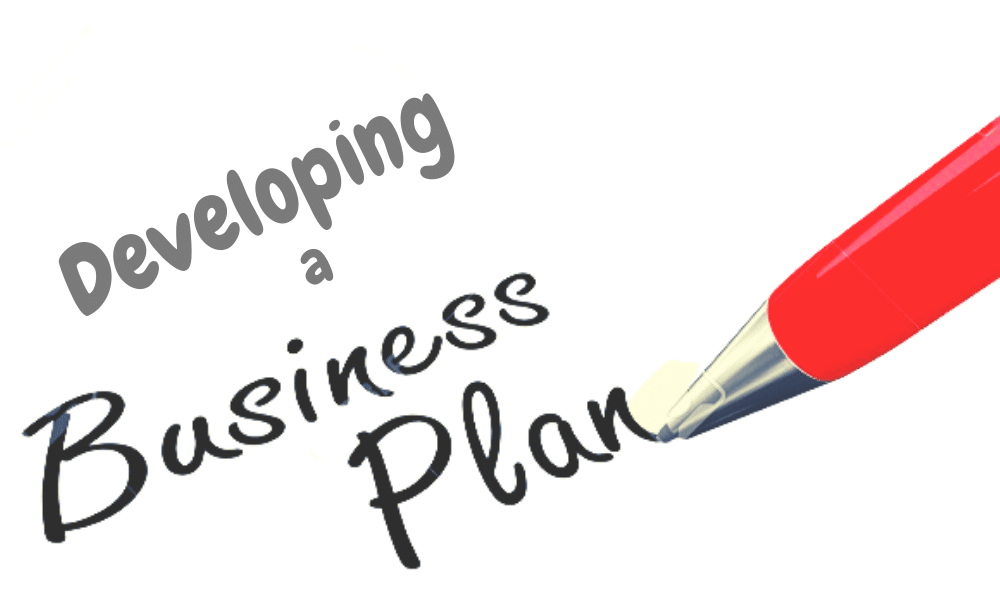One of the most crucial aspects of a successful sales plan is accurately establishing your ideal customer profile (ICP). We can help if your sales team doesn’t have an ideal customer profile or if you’re unsure of what to consider while creating one. You’ll learn all you need to know how to create an ideal customer profile in this article, including what it is, why it’s crucial to have one, and how to develop your own ideal customer profile to help your sales staff succeed despite the current economic scenario.
Ideal Customer Profile
The type of business that would profit the most from your product or service is referred to as an ideal customer profile. Businesses that suit your ideal customer profile are more likely to purchase and utilize your product, making them crucial for business expansion. Your Ideal customer profile should concentrate on pertinent traits of your target accounts, such as:
- Industry/vertical
- Employee headcount, both overall and in important departments
- Yearly income
- Budget
- Geography
- They employ technology
- Size of their clientele
- Maturity of an organization or technology
Why Ideal Consumer Profile is Important
The purchasing process is evolving, and it is evolving more quickly than ever. Some sales leaders predict that the speed at which purchases are happening in B2C marketplaces will eventually be mirrored in B2B sales cycles as well. Jeff Bezos wrote in his 2021 shareholder letter that “customers complete 28% of purchases on Amazon in three minutes or less… and half of all purchases are finished in less than 15 minutes.”
So how does the development of anideal customer profile relate to the quickening of sales cycles? Consider it this way: If buyers are making decisions more quickly, you, as a salesperson, must be acutely aware of how your product can affect a prospect’s bottom line before you reach out. If you can’t provide value to a prospect right away, the door will be slammed in your face faster than before. Determining your Ideal customer profile becomes important in this situation.
By assisting you in identifying significant traits that your most profitable customers have, an ideal customer profile can help you determine who you need to target and why (or will share). Your ideal customer profile should always be supported by precise facts and corporate firmographics, such as technographic data, funding or IPO status, company size, revenue, industry, and location.
Ideal Customer Profile Template B2B
Discover your company’s ideal customer profile by using this three-page worksheet. Don’t fill this out on your own for the best results! Set up a time for your marketing, sales, and customer success teams to meet and go over the worksheet so that everyone is aware of your ideal customer profile and this template for an ideal client profile.
Example of an Ideal Customer Profile
A B2B support desk software company’s ideal customer profile would resemble this:
A B2B SaaS company in the United States or Canada with an ARR of at least $20 million and a customer support staff of at least 10 employees would be our ideal client. Small and medium-sized firms, which have a high need for hands-on training and support, make up their clientele.
As you can see, this sample of an ideal customer profile doesn’t include every aspect we discussed previously. Your team will decide which elements are most critical to include in your Ideal customer profile.
How to Create an Ideal Customer Profile
The following are steps on how to create an ideal customer profile
#1. Explain Why You Require a Perfect Consumer Profile.
The first step on to how to create an ideal customer ideal is to ask, What outcomes am I seeking from my ideal client profile? Making sure you have a specific purpose in mind for your consumer profiling will really help you focus the scope and scripting of your study because there are so many uses for customer data and profiling.
#2. Pay Close Attention to Two Factors
You might anticipate that these two factors will polarize your industry. Cost, brand recognition, or another factor on how to create an ideal customer profile might be what determines them. Your variables only need to include a concept that might divide your target audience’s opinions.
#3. Ensure That Your Variables Are Mutually Exclusive.
With the previous gym example, you don’t want respondents to say they go every day while also saying they go once a month. By staying away from multiple-choice questions, you may make sure that your variables are mutually exclusive.
#4. Use Demographic Filters to Give Your Consumer Profiles Life
You can get more information about your consumer research as a whole if you use demographic filters, like the ones on the Attest customer research platform.
When you add your own behavioral and psychographic questions to demographic information like age, gender, or location, you’ll get a much clearer picture of your ideal customer profile as a whole.
#5. Compare Your Data Analysis to Your First Results.
Cross-tab the most divisive questions on Attest’s interactive results dashboard to see how the answers are grouped together by other factors. You will then know the fundamental characteristics of each profile.
#6. Repeat.
The final step on how to create an ideal customer profile .profiling has the benefit of being a simple, repeatable approach. Repeating your consumer profiling research can really help you stay on top of any new trends or shifts in views among your current or potential clients.
Ideal Customer Profile vs Buyer Persona
B2B marketers often talk about what the difference is between an ideal customer profile and a buyer persona. Does your ideal customer profile take on the role of your buyer personas? Do you require both?
Ideal customer profile and buyer personas are not the same thing, yet they are closely related. Since ABM focuses on accounts rather than leads, it’s crucial to keep in mind that each account still consists of individuals with various roles and goals. Your buyer personas will be useful in this situation. For instance, you can decide that a major element of your ideal customer profile is the presence of particular stakeholders at an account.
Based on psychological aspects and marketing information such as demographics, pain spots, aspirations, and requirements or motivators, a buyer persona reflects your ideal customers. On the other side, your Ideal customer profile isn’t simply a target consumer; it’s your perfect customer, the one who benefits the most from your product or service.
What 3 Things Are Included in a Customer Profile?
Several brand qualities are frequently cited as being included in customer profile:
- Convenience: You make it quick and simple for customers to do business with you.
- Personalization: You can speak to them on a personal level. They understand that the experience you provide is customized to meet their particular needs and aspirations.
- They have a sense of community and a sense of belonging. They communicate with you frequently, interact with other customers, and carefully read reviews.
What Is an Example of Ideal Customer?
A person who has their issues resolved by your business is your ideal client. Ideal customer profiles can help businesses find the markets they want to focus on so that their marketing and advertising campaigns are morsuccessful. These are the only kinds of customers you can easily get and keep because your services or products meet specific needs and special demands. Making these customer content may also lead to them recommending your offerings to acquaintances, which will aid in the expansion of your company.
Characteristics of the Ideal Customer
The following are common characteristics of an ideal customer, as represented by the list below:
#1. They Adore Your Offering
Someone who sincerely appreciates the products and services offered by your company is your ideal client. They frequently value how your product or service makes their lives easier or benefits them in some other way in addition to needing these items to fill a need.
2. They Purchase at Your Pricing Point.
You want to make sure that the prices you establish for your goods and services satisfy your requirements while also luring buyers. Even when you believe the pricing is reasonable, you could still run into people who require more persuasion to buy.
#3. They Frequently Purchase From Us.
When you have a lot of competitors in your industry, you can identify your ideal clients by noting who keeps coming back to your store. These customers, for instance, can decide to choose your solutions over comparable goods or services even when the competitor is offering savings.
#4. They Serve as Excellent Ambassadors.
An ideal customer is a person who values your service or product and spreads enthusiasm to others they know. This word-of-mouth advertising is a powerful tool for businesses.
What Are the 4 Types of Customer Profiles?
The four of the customer profile we often concentrate on when constructing segments are geographics, demographics, psychographics, and behavior. Let’s examine each of these components in more detail.
#1. Geographics (Where)
Location can be significant, so it’s crucial to leave it out of your communications if you can’t offer your goods or services in a given region. The same applies if you wish to focus on a certain region. The following are some of the categories that make up geography:
- City
- Region
- Country
- Postal or ZIP code
- Climate
- Urban/rural
- Timezone
- Language
#2. Demographics (Who)
The who is another element of consumer profiling that is simpler to understand. Census data, analytics software, consumer insights, and other types of information about demographics are often easy to find. You’ll be looking at the following for demographics:
- Age
- Gender
- Ethnicity
- Family situation
- Title of employment
- Income
- Education
- Business size and type
- Industry
#3. Psychographics (What & Why)
The discussion of personas, personalities, and character qualities really gets going at this point. The pieces of the puzzle that fill in all the blanks about a person are their psychographics. Hence, psychographics consists of:
- Lifestyle
- Interests
- Values
- Attitudes
- Habits
- Goals
- Problems/pains
- Influences
- Beliefs
- Motivations
#4. Behavior (When & How)
Understanding your audience’s behavior will help you decide when and how to reach them. Also, you can monitor how current clients use your product. These are some metrics you can monitor:
- Engagement
- Buying customs
- Spending patterns
- Use of the product
- Level of satisfaction
- Loyalty and length of time as a consumer
- Support or consideration is required.
Conclusion
The ideal customer profile (ICP) describes the firmographic, environmental, and behavioral characteristics of accounts that are anticipated to become a company’s most valuable clients. It is made with the help of both qualitative and quantitative tests, and it could also use predictive analytics. By making a basic profile of an organization’s best customers, the sales and marketing teams can come up with ways to convert them that can be measured.
Related Articles
- PSYCHOGRAPHICS: Best Practices & All You Need To Know, Simplified!
- DEMOGRAPHICS OF TARGET MARKET: How to Define & Identify Them!!!
- Market Segments: Definition & List Of Different Market Segments
- THE IDEAL WORK ENVIRONMENT: Things That Make up an Ideal Work Environment






